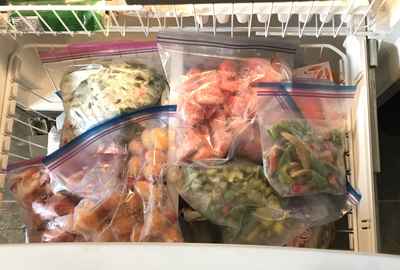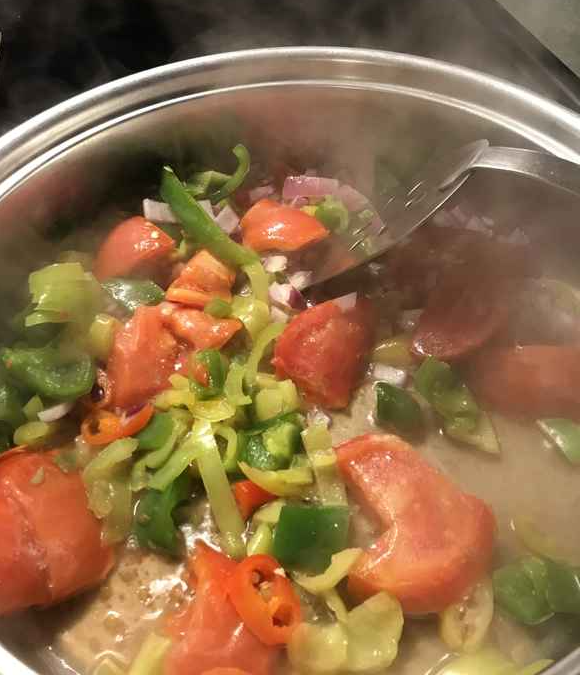Freeze and Thaw

The days have gotten warm enough that the ice on the edge of the pond is melting. Hurray!
Meanwhile, the freezer reveals that our supply of last year’s peppers is almost exhausted. Booo.
How did that happen? We’re usually eating the last of the frozen tomatoes around March, but the peppers last until May.
This is probably what comes of someone’s insistence that we don’t need to grow so many hot peppers. It’s easy enough to eat up those sweet peppers with spaghetti dinners and liberally adding them to morning eggs. But I’m sure if it were more hot peppers in those bags, the supply wouldn’t diminish quite so quickly. #illogical
On the bright side, many bags of tomatoes remain. I’m aware that canning is the traditional way to preserve these vegetables (especially tomatoes), but the freezer is my go-to in October when the overstock of veggies needs to be dealt with pronto. We rough chop the peppers and bigger tomatoes, spread them out on a cookie tray, and place them in the freezer for a few hours. Then we pull them out, package them into freezer bags, and pop them back in the freezer before they have time to thaw. This keeps them in small, individually frozen pieces. Much more useful than the frozen gallon-sized mega-tomato that would result from placing bags of warm tomatoes in the freezer directly.
These freezer veggies provide a winter pick me up. I know they improve our diet by increasing the amount of vegetables we consume. But another benefit is the mood boost they provide. The bright reds and oranges are an antidote to the grey outside. They release water when thawed, but turn the heat up and let the juice reduce in the pan with a bit of olive oil.
The intense taste gives me hope that spring is coming. We grew these beautiful jewels just beyond the back gate, and it wasn’t so long ago either. I’m probably alone in this, but by the time February rolls around, I’ll take all the boosts I can get.

To bring it back to the public good, are you aware that 90% of Americans do not meet the recommended daily intake of vegetables? Your local farmer can help with that. Maybe not so much in February, but that's where your part comes in. This October, shop the farmer's market with an eye towards the freezer (remember, a full freezer consumes less energy than an empty one). Produce prices are inclined to dip during the last day the market is open (usually late October). In early October let the farmer know you are interested in quantity for preserving and are willing to take produce that's smaller than usual or has some imperfections in exchange for a better price.
Or better yet, if you have a little patch with some sun, plant your own garden. Now's the time to think about seeds and how you are going to keep the deer out. For those who are inspired at the last minute, veggie seedlings are usually available at the Farmer's Market in mid May. I'll be starting my seedlings soon. :)


0 comments
Leave a comment